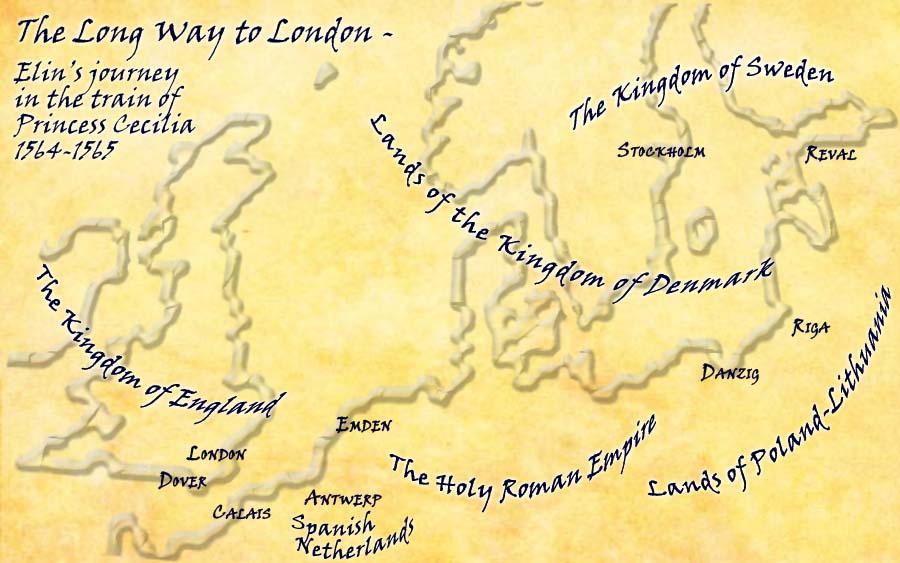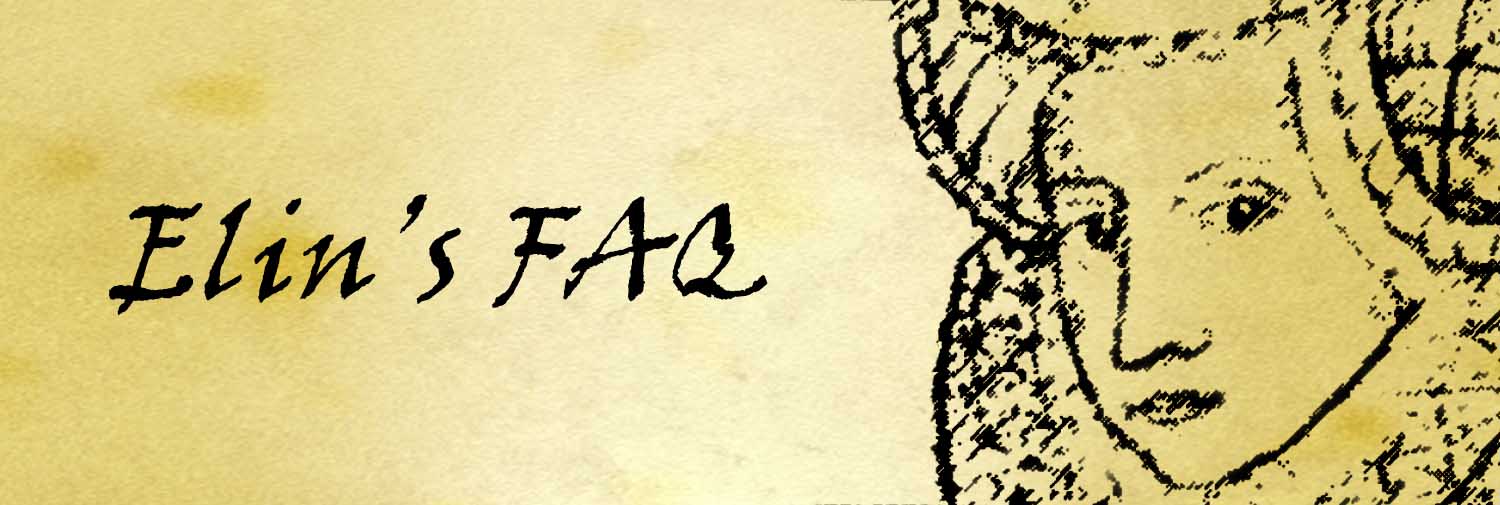Frequently Asked Questions (FAQ) about Elin’s Story
The Long Way to London is the first of these novels. It tells the story of how the fatherless Elin Ulsdotter becomes a Maid-of-Honour to Swedish Princess Cecilia Vasa in 1564. The Princess is 24, beautiful, selfish and wilful. She has a fan crush on the English Queen Elizabeth who is just six years older than her. Blocked from travelling to London by sea because of the war Sweden is fighting with Denmark, the Princess takes her Maids on a 10 month long, dangerous journey to London “the long way” by way of the Baltic Sea, northern Europe and the English Channel. The story is told mostly through Elin’s eyes with a little input from a couple of other characters.
Read a longer synopsis of the story here.

Meanwhile Elin remained in England as a Maid at the court of Queen Elizabeth. When she was 21 Elin married Queen Elizabeth’s uncle, the elderly William Parr. On his death, five months later, she returned to the Queen’s Court as a Lady-in-Waiting. Now known as Helena, Marchioness Northampton, she was one of the small circle of noblewomen around the Queen. This is the subject of at least one of the later novels in the suite.
In 1576 Elin married, secretly, one of the Queen’s Gentlemen. Found out, she was accused of high treason – for a Lady of the court to marry without the Queen’s permission was against the law. High treason carried the death penalty.
In Elin’s Story, Elin is pregnant with her first child as she waits under house arrest for the Queen to decide what to do with her. While she waits, she writes the story of her life for her unborn child.
There are no pictures of her as a young woman that are undisputed, although there is a portrait in the Tate Gallery’s collection in London dated 1569, which is described as “A Young Lady Aged 21, possibly Helena Snakenborg, later Marchioness of Northampton”. We know that a portrait was painted of Elin at 21, but then it was lost. One of Elin’s biographers, Gunnar Sjögren, made an argument for the lost portrait being the Tate’s picture, but while there are good reasons for him being right, there are also things about the portrait that don’t fit Elin’s story as we know it. Nevertheless, this is the portrait that currently illustrates her Wikipedia entry. (An entry that should be treated with great caution, by the way!)
Elin was supposed to bear a striking resemblance to Elizabeth Brooke, William Parr’s second wife and a close friend of Queen Elizabeth. Elizabeth Brooke died (of cancer) in April 1565, about four months before Parr met Elin. Finding a description of Elizabeth Brooke – or better still a portrait of her – might give a hint of what Elin looked like at the time, but again I draw a blank. The medallion currently illustrating Elizabeth Brooke’s Wikipedia entry is not much help.
First, Elin is the Swedish form of Helen and in the 1500s the “H” was silent both in Swedish and English. Elin herself, as a 15-year-old, signed her letters “Elin Ulsdotter”, so we know that this is what she called herself. Later on, as she grew up and lived in England at the Queen’s court, she seems to have changed to writing her name as Helena, but in The Long Way to London, she has yet to get to England.
Secondly, at this time in Sweden people did not generally use surnames. They identified themselves by their given name and by their patronym, just as most Icelanders still do today. Elin was Ulsdotter or Ulfsdotter – the daughter of Ulf. Her brother Göran, who came to England to witness her wedding in 1571, called himself Ulf(sson). We know this because in English documents of the time he is named as “George Wolf”.
Of course the family would have known they were members of the Swedish aristocratic Bååt family, and they certainly used the Bååts’ red boat symbol on their family coat of arms, but they did not use “Bååt” as a surname. The family would also have known that they had a claim on the name Snakenborg from a married-in ancestor five or six generations back. It seems, after Elin’s marriage to William Parr, and as it became more fashionable to have family names in Sweden, the family started calling themselves Snakenborg. (There were then, and still are today, a good many Bååts.)
Once again, though, at the time of The Long Way to London, this is all in the future.
I’ll add to this page as more questions come in. Ask!

